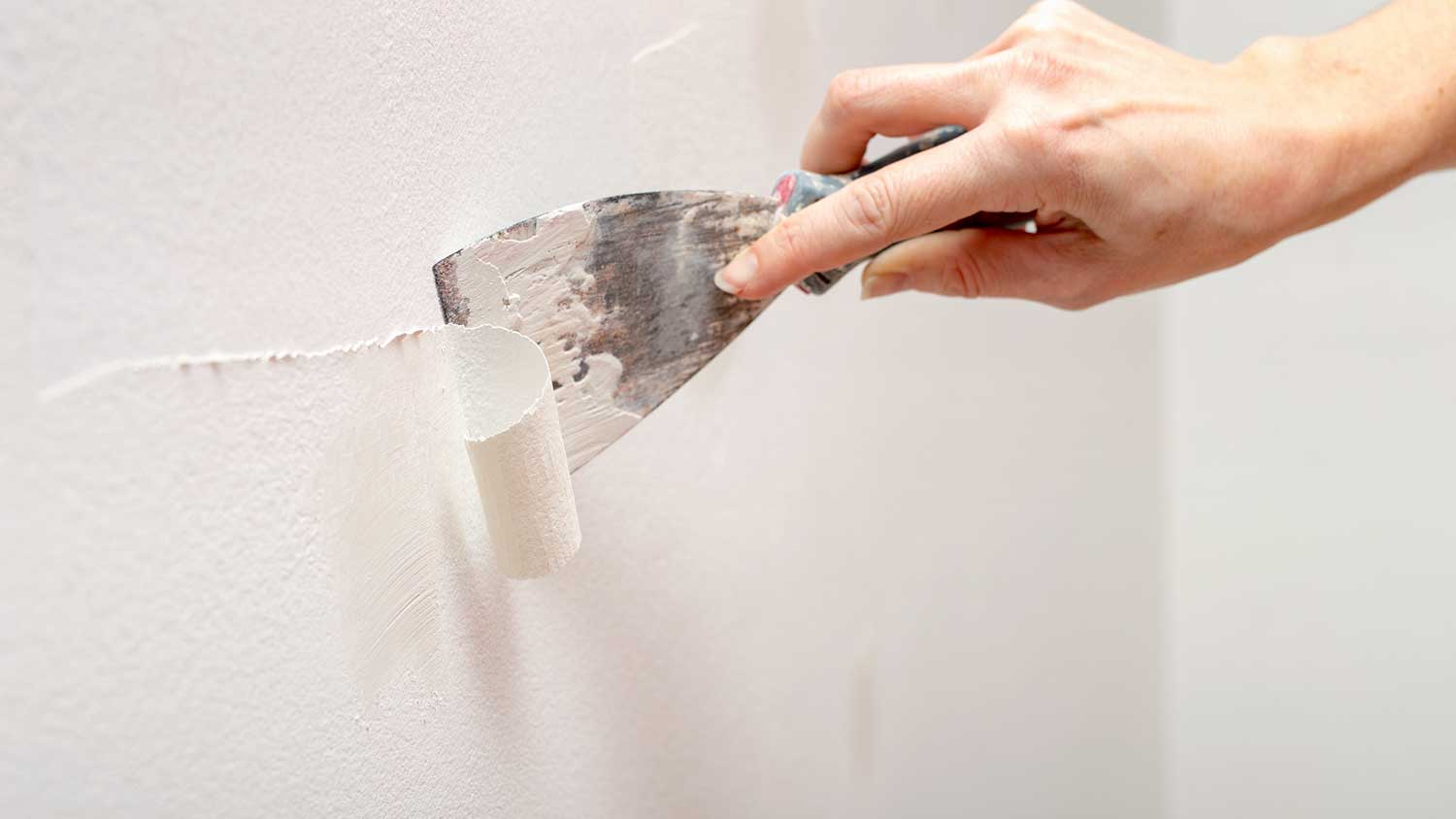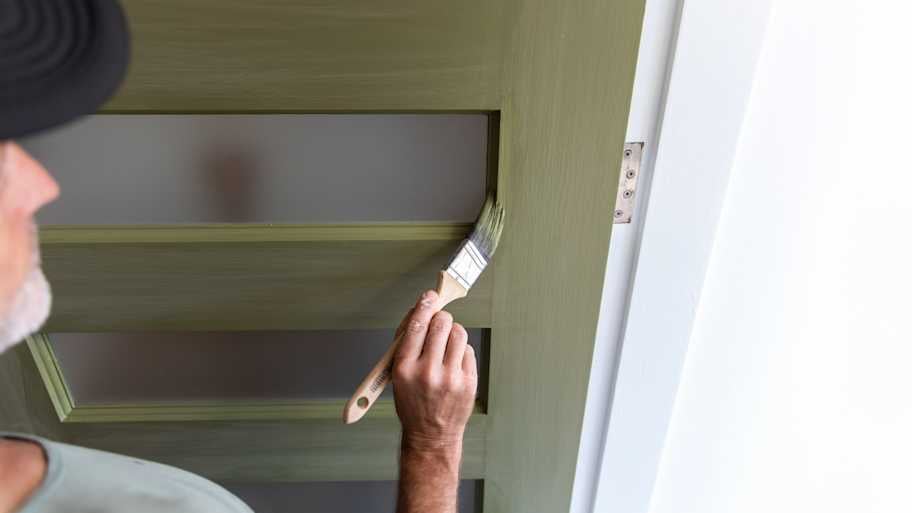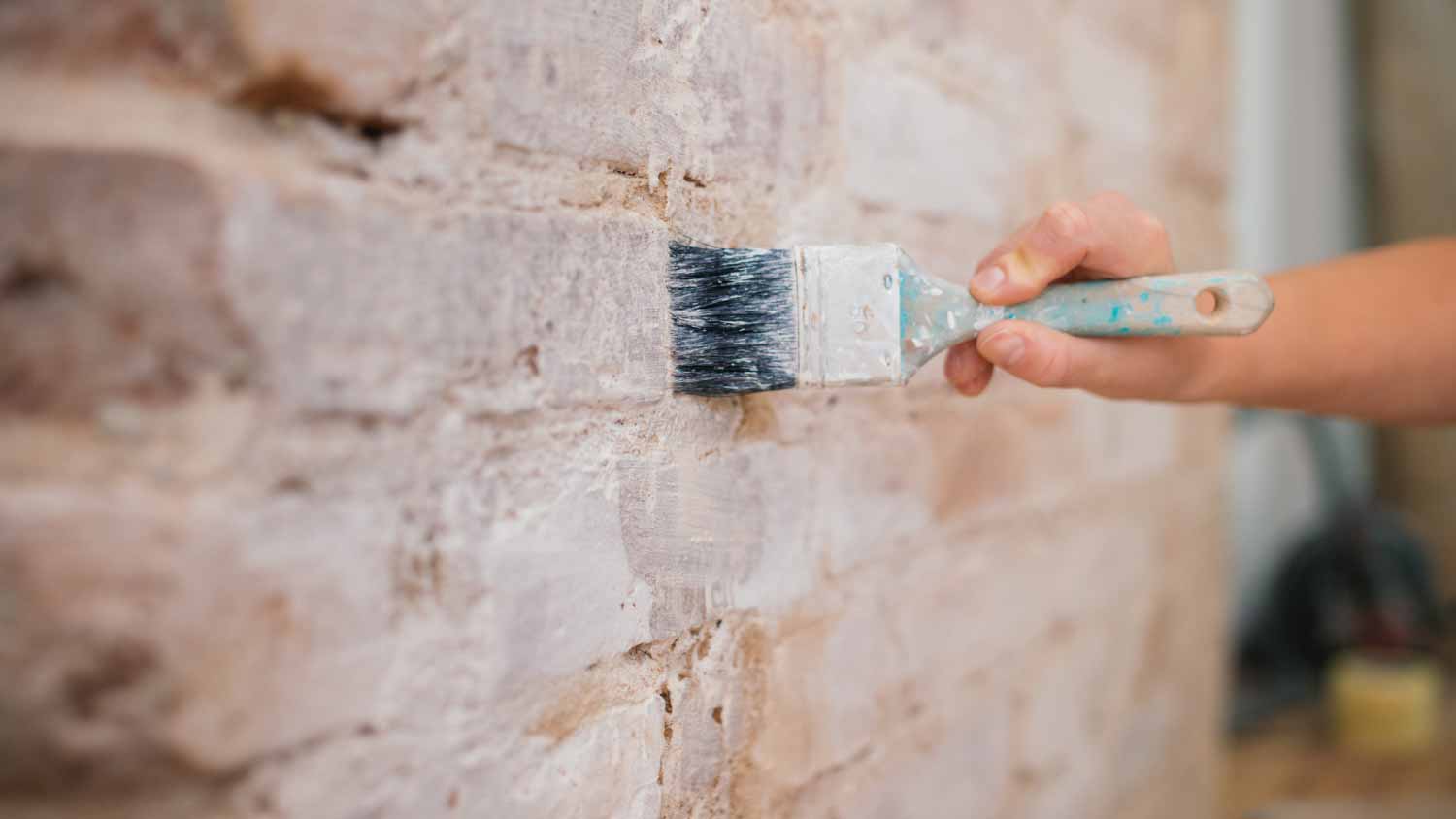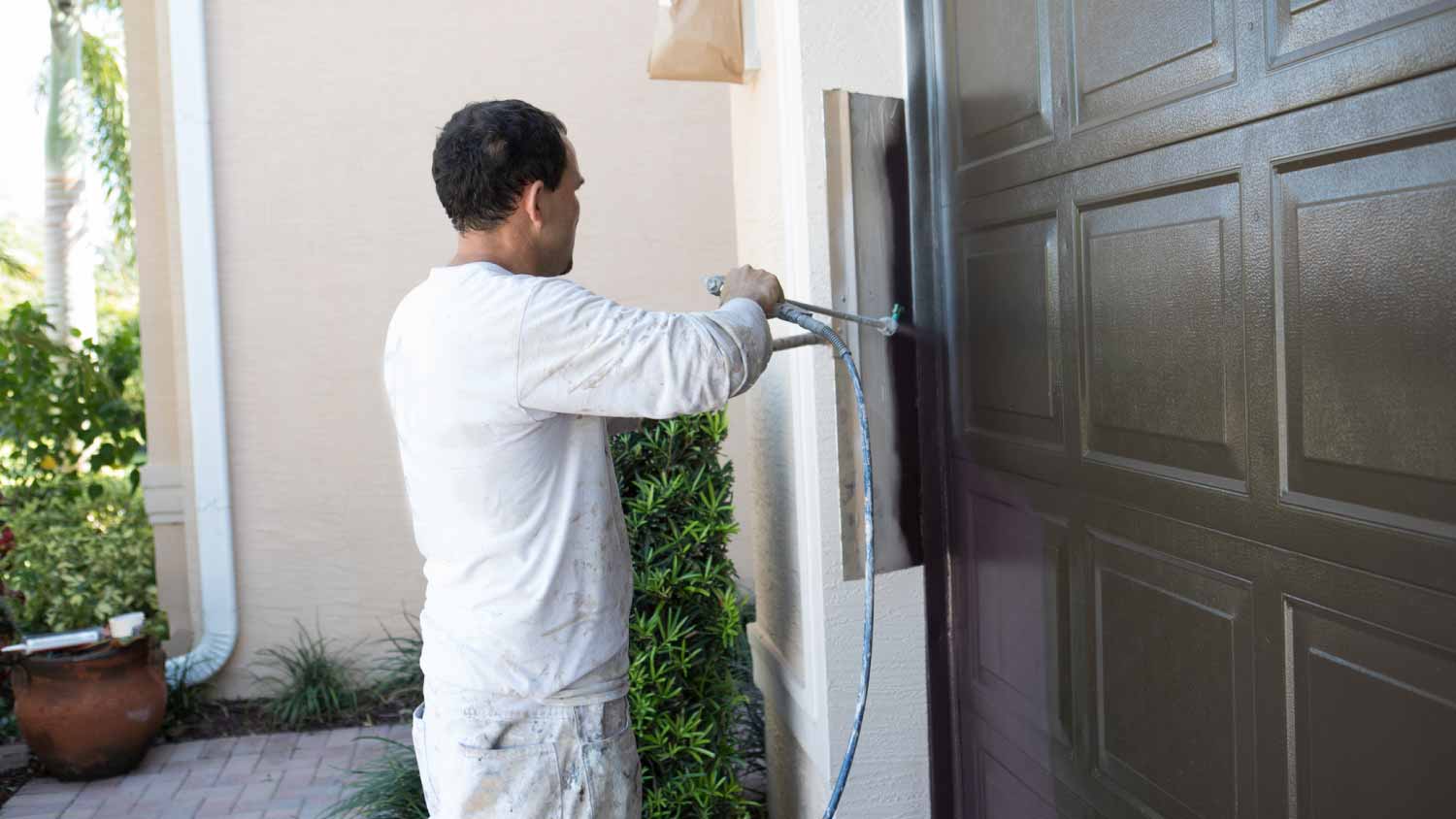
The cost to remove texture from walls depends on square footage and the type of texture. Learn all the factors that will impact your budget in this guide.
There’s no barrier to entry with these helpful tricks at your disposal


Front doors are a statement piece—they signal your tastes to others and set the stage for how you feel in your abode. How they look matters and painting them isn’t always so simple despite the relative ease of such a project.
Common pitfalls—like using the wrong type of paint or forgoing a primer coat—can prevent your dream facade from becoming a reality. These tips for painting a front door are designed to prevent potential upsets from DIY paint jobs, so you can rest assured that your entryway always looks as good as you feel walking through it.
There’s no shortage of great paint colors for front doors, but the right shade for your domain will depend on the other hues at play—and the impact you hope to create. For instance, you can go bold with a color like bright yellow or firetruck red, but only if it complements what’s already on your siding and trim. Otherwise, it’ll stick out like a sore thumb rather than standing out in a glamorous way.
On the flipside, you may prefer a mellow hue that creates a more classic appearance, in which case you’ll be better off picking a paint from the same color palette as the rest of your home exterior. That could be an earthy brown alongside a beige, stucco facade, or a navy blue front door to give pure white siding a nautical twist.
Still stumped? There are a bunch of great tips for picking the right front door color, from assessing current trends to learning which best suits your particular architectural style.
You can’t swap indoor paint for exterior paint because the latter is formulated to protect it from elements that the former will never experience—like rain, freezing temperatures, and extended sun exposure.
The best exterior door paints are those that withstand moisture and temperature fluctuations—like epoxy paint, which is water-resistant thanks to the resin it contains.
One coat of paint is never enough to hide the shadows of an old paint job—and sometimes several coats don’t cut it either, especially if the last color was a particularly dark one. Opting to prime a front door before painting will eliminate any residual signs of a former shade while also reducing the need to make multiple coats.
No amount of primer will conceal old paint that’s actively peeling. In cases like these, you’ll need to remove the previous coats beforehand or run the risk of a new paint job that’s patchy, lumpy, and possibly peeling again before it’s even fully cured.
You have options when it comes to how to do a task like this—from chemically or manually stripping it to sanding it down—and the methods available to you will vary depending on the material of the door. For instance, the process of removing paint from a wood door is different from what you should do with a door made of metal.

Although you might feel inclined to paint your front door the moment you feel motivated, it’s a good idea to wait for optimal conditions. Painting in extremely hot weather can cause your strokes to dry before you’ve finished a full coat, whereas doing it in high humidity, freezing cold, or rain can lead to the opposite problem—an infernally long dry time or streaky results. Late spring and early autumn are the best times for a project like this, when the sky is relatively clear and the temps are balmy but neither too hot nor too cold.
Rollers leave behind a texture, which is great if you want it, but not ideal for front doors where a uniform appearance is often preferred. You’ll be more efficient and get a better final product by going the old-fashioned route and using a paint brush instead.
But not just any brush—now is not the time to save a few bucks on an inexpensive alternative that will leave behind noticeable strokes or worse (like brush hairs). The cost to paint a door is already low compared to larger-scale painting projects, so there’s no harm in spending a bit more on a better brush to ensure greater results.
Visible brush strokes are still a risk even with a high-quality paint brush. The good news is that there are solutions you can mix into the paint to reduce or completely eliminate their presence—like certain latex-based additives designed expressly for this purpose.
Front doors can get dusty fast, which is why it’s a good idea to thoroughly wipe yours down before painting even if it hasn’t been that long since the last time you did it. Use a sponge and a mild cleaning solution like warm water with a bit of dish soap to remove debris, then dry the door completely with a microfiber cloth before painting.
Laying down drop cloths and covering the corners with the edges and corners of your door are just as important outside as they are inside. The last thing you want is to mess up your home’s walkway with unnecessary paint splatter or ruin the siding alongside it because you didn’t put up painters’ tape.
If you’re not so confident in your painting abilities—at least, not when they’re on display the way they are on a front door—don’t hesitate to hire a professional painter near you to take care of the job instead. They’ll deliver the results you’re looking for, so all you have to do is sit back and enjoy your vibrant new front door.
From average costs to expert advice, get all the answers you need to get your job done.

The cost to remove texture from walls depends on square footage and the type of texture. Learn all the factors that will impact your budget in this guide.

The cost to paint the interior of a house in Dallas, TX depends on size, layout, type of surface, and more. Learn what factors can influence your total in this guide.

The cost to paint the interior of a house depends on size, layout, type of surface, and more. Learn what factors can influence your total in this guide.

Looking for the perfect hue to revamp your space and elevate your farmhouse design? Use these perfect farmhouse paint colors for inspiration.

There are many alternatives to painting brick walls, including staining and whitewashing. Learn more about different methods for bringing new life to your brick space.

Not sure who to hire for electrostatic painting? Learn which pros to call, how the process works, and how to choose the right service.